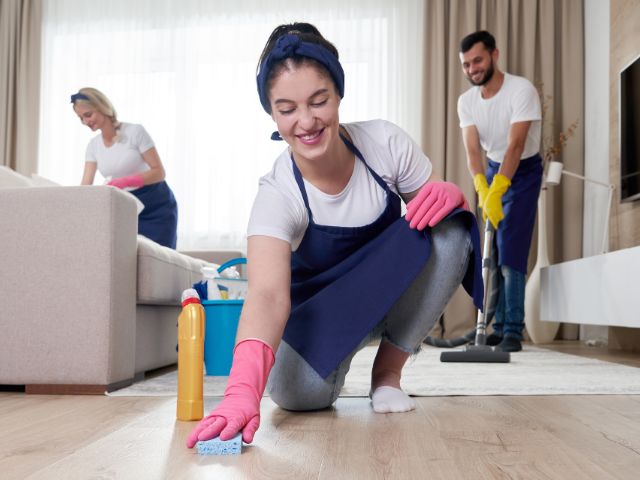In today’s world, maintaining a hygienic environment is more critical than ever. Professional cleaning and sanitization not only enhance the visual appeal of spaces but also play a pivotal role in eliminating harmful bacteria and viruses. This blog post delves into the science behind these processes and explains how advanced cleaning techniques safeguard our health.
Understanding the Microbial World
Bacteria vs. Viruses
- Bacteria: Single-celled organisms that can thrive on various surfaces. Some bacteria are harmless or even beneficial, while others can cause infections.
- Viruses: Much smaller than bacteria, viruses require a host cell to replicate. Their structure often includes a protein coat and, in many cases, a lipid envelope that makes them vulnerable to certain cleaning agents.
Understanding these differences is key to appreciating how professional cleaning strategies are designed to target and eliminate these microbes effectively.
How Professional Cleaning Works
Physical Removal
The first step in effective cleaning is the physical removal of dirt, dust, and debris where microbes can hide. Techniques include:
- Scrubbing and Agitation: Mechanical action helps dislodge dirt and microbes from surfaces.
- Vacuuming with HEPA Filters: Captures fine particles, including bacteria and allergens, preventing them from recirculating in the air.
Chemical Disinfection
Once the physical debris is removed, specialized disinfectants are applied to kill any remaining pathogens. These disinfectants work by:
- Disrupting Cell Walls: Many disinfectants break down the cell walls of bacteria, rendering them unable to survive.
- Denaturing Proteins: Chemicals like alcohol and hydrogen peroxide disrupt the proteins that are essential for the survival of both bacteria and viruses.
- Damaging Genetic Material: Some agents interfere with the DNA or RNA of microbes, preventing them from replicating.
Advanced Technologies
In addition to traditional cleaning and chemical disinfection, professional services often incorporate advanced technologies, such as:
- Steam Cleaning: Uses high temperatures to kill bacteria and viruses without the need for harsh chemicals.
- Electrostatic Spraying: Ensures even coverage of disinfectants on all surfaces, including hard-to-reach areas.
- UV-C Light Sanitization: Uses ultraviolet light to damage the genetic material of microorganisms, rendering them inactive.
The Role of Sanitization
Sanitization is a targeted process that goes beyond mere cleaning. It involves reducing the number of pathogens to safe levels, particularly on high-touch surfaces. The efficacy of sanitization depends on:
- Contact Time: The length of time a disinfectant must remain on a surface to be effective.
- Concentration of Disinfectant: Higher concentrations can eliminate microbes more quickly but must be used safely.
- Surface Compatibility: Choosing the right disinfectant for different materials ensures that cleaning is both effective and safe for the surfaces involved.
Why It Matters in Commercial Spaces
In busy environments like offices, schools, and retail spaces, the risk of pathogen transmission is significantly higher. Professional cleaning and sanitization are essential to:
- Prevent Outbreaks: Regular, thorough cleaning helps curb the spread of infectious diseases.
- Maintain Air Quality: By removing contaminants from surfaces, professional cleaning contributes to a cleaner indoor atmosphere.
- Enhance Public Confidence: A sanitized space not only protects health but also reassures clients and employees that their well-being is a priority.
For a deeper dive into these practices in larger environments, check out our detailed post on Sanitization in Commercial Spaces.
Conclusion
The science behind professional cleaning and sanitization combines physical removal with chemical and advanced technological interventions to effectively eliminate bacteria and viruses. By understanding these methods, it becomes clear that a well-executed cleaning regimen is more than just about appearance—it’s a critical component of health and safety.
Investing in professional cleaning services ensures that your space is not only visibly clean but also free from harmful pathogens, creating a safer environment for everyone.
